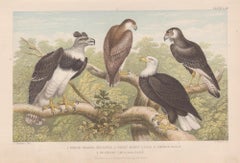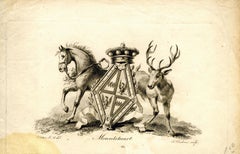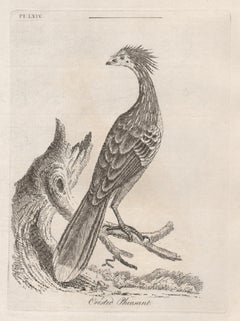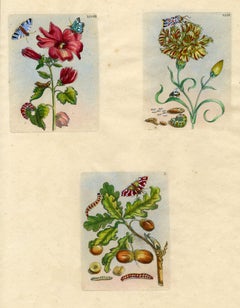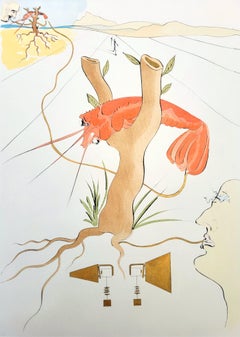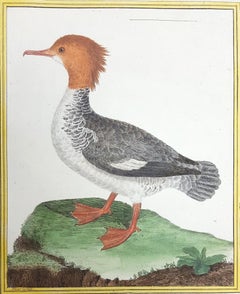Engraving Animal Prints
Late 19th Century Victorian Engraving Animal Prints
Engraving
17th Century Italian School Engraving Animal Prints
Laid Paper, Engraving
Late 18th Century Naturalistic Engraving Animal Prints
Engraving
Early 18th Century Naturalistic Engraving Animal Prints
Watercolor, Engraving
1970s Surrealist Engraving Animal Prints
Engraving, Etching, Intaglio
1770s Old Masters Engraving Animal Prints
Watercolor, Laid Paper, Engraving, Intaglio
Early 18th Century Other Art Style Engraving Animal Prints
Engraving
1920s Modern Engraving Animal Prints
Drypoint, Etching
Late 19th Century Victorian Engraving Animal Prints
Engraving
Early 18th Century Naturalistic Engraving Animal Prints
Watercolor, Engraving
2010s Contemporary Engraving Animal Prints
Paper, Drypoint, Etching
1770s Old Masters Engraving Animal Prints
Watercolor, Laid Paper, Engraving, Intaglio
Early 18th Century Naturalistic Engraving Animal Prints
Watercolor, Engraving
1990s American Modern Engraving Animal Prints
Mezzotint
2010s Aesthetic Movement Engraving Animal Prints
Paper, Mulberry Paper, Mezzotint, Etching, Aquatint
Late 18th Century Naturalistic Engraving Animal Prints
Engraving
1930s Modern Engraving Animal Prints
Engraving
1970s Surrealist Engraving Animal Prints
Drypoint, Aquatint
Late 18th Century Naturalistic Engraving Animal Prints
Engraving
1990s Contemporary Engraving Animal Prints
Drypoint, Etching, Aquatint
1980s Contemporary Engraving Animal Prints
Paper, Engraving, Screen
Late 18th Century Naturalistic Engraving Animal Prints
Engraving
Late 18th Century Naturalistic Engraving Animal Prints
Engraving
2010s Contemporary Engraving Animal Prints
Engraving
Late 18th Century Naturalistic Engraving Animal Prints
Engraving
1920s Modern Engraving Animal Prints
Drypoint, Etching
Late 18th Century Naturalistic Engraving Animal Prints
Engraving
Late 18th Century Naturalistic Engraving Animal Prints
Engraving
Early 19th Century Naturalistic Engraving Animal Prints
Engraving, Etching
Late 18th Century Naturalistic Engraving Animal Prints
Engraving
Late 20th Century Post-Modern Engraving Animal Prints
Archival Paper, Drypoint, Etching, Aquatint
1770s Engraving Animal Prints
Engraving
1970s Surrealist Engraving Animal Prints
Drypoint, Aquatint
Late 18th Century Naturalistic Engraving Animal Prints
Engraving
Mid-19th Century Victorian Engraving Animal Prints
Engraving
Late 18th Century Naturalistic Engraving Animal Prints
Engraving
Late 18th Century Naturalistic Engraving Animal Prints
Engraving
Early 19th Century Naturalistic Engraving Animal Prints
Engraving, Etching
Late 18th Century Naturalistic Engraving Animal Prints
Engraving
Early 19th Century Naturalistic Engraving Animal Prints
Engraving
Late 18th Century Naturalistic Engraving Animal Prints
Engraving
Late 18th Century Naturalistic Engraving Animal Prints
Engraving
Late 18th Century Naturalistic Engraving Animal Prints
Engraving
Late 18th Century Naturalistic Engraving Animal Prints
Engraving
Late 18th Century Naturalistic Engraving Animal Prints
Engraving
Late 18th Century Naturalistic Engraving Animal Prints
Engraving
Early 19th Century Naturalistic Engraving Animal Prints
Engraving
Late 20th Century Pop Art Engraving Animal Prints
Mezzotint
Early 2000s Engraving Animal Prints
Drypoint
Late 18th Century Naturalistic Engraving Animal Prints
Engraving
Mid-19th Century French School Engraving Animal Prints
Engraving
1970s Surrealist Engraving Animal Prints
Engraving
Late 18th Century Engraving Animal Prints
Engraving
1760s Naturalistic Engraving Animal Prints
Engraving
Mid-19th Century French School Engraving Animal Prints
Engraving
Mid-19th Century Naturalistic Engraving Animal Prints
Engraving
1940s Cubist Engraving Animal Prints
Paper, Etching, Drypoint, Aquatint
Early 20th Century Modern Engraving Animal Prints
Drypoint, Etching
1910s Modern Engraving Animal Prints
Drypoint, Etching
Early 2000s Contemporary Engraving Animal Prints
Mezzotint, Aquatint
